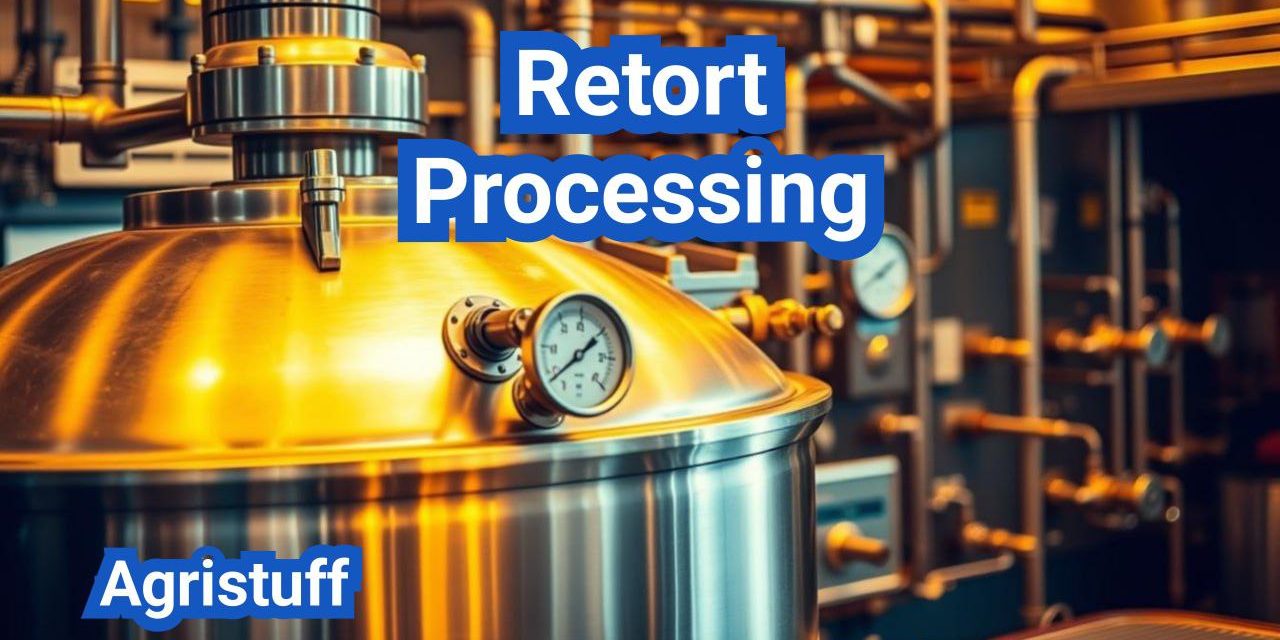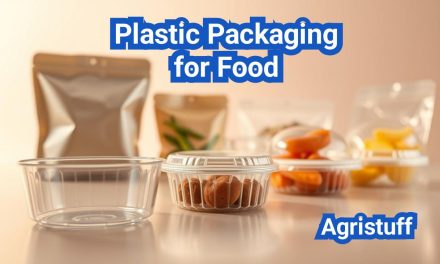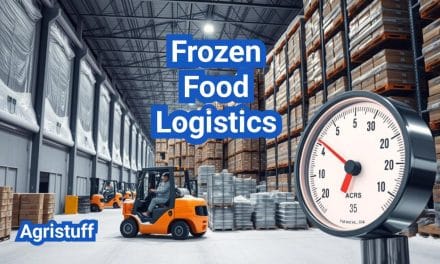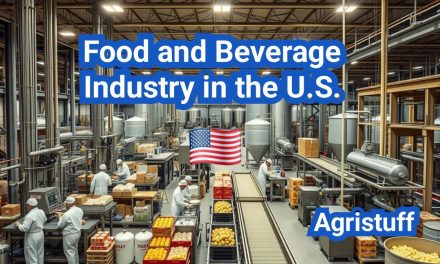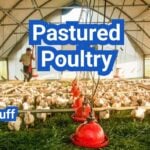Retort processing is a critical technique in the food industry for achieving commercial sterility in shelf-stable meals. This method involves thermal sterilization, a process that ensures food safety by eliminating harmful bacteria and other pathogens.
The significance of retort processing lies in its ability to preserve food while maintaining its nutritional value and flavor. By adhering to U.S. standards, food manufacturers can ensure their products are safe for consumption and meet regulatory requirements.
Thermal sterilization is a key component of retort processing, and its application is crucial for producing shelf-stable meals. This process not only enhances food safety but also extends the shelf life of products, making it an essential technique in food preservation.
Key Takeaways
- Retort processing is essential for achieving commercial sterility in food products.
- Thermal sterilization is a critical component of retort processing.
- Adhering to U.S. standards ensures food safety and regulatory compliance.
- Shelf-stable meals produced through retort processing have extended shelf life.
- Retort processing preserves the nutritional value and flavor of food.
What Is Retort Processing and Why It Matters
The importance of retort processing lies in its ability to achieve commercial sterility in food products, making it a crucial step in the production of shelf-stable meals. Retort processing involves heating food in hermetically sealed containers to inactivate microorganisms, thereby ensuring food safety.
Definition and Purpose of Thermal Sterilization
Thermal sterilization, achieved through retort processing, is defined as a process that uses high temperatures to eliminate or inactivate microorganisms in food. The primary purpose of this process is to ensure that the food is safe for consumption and has a prolonged shelf life without refrigeration.
The process involves subjecting sealed food containers to high temperatures under pressure, effectively killing bacteria and other pathogens. This method is particularly important for foods that are not naturally sterile or have been handled in a way that could introduce contaminants.
Commercial Sterility vs. Complete Sterilization
It’s essential to distinguish between commercial sterility and complete sterilization. Commercial sterility refers to the condition where a food product is rendered free from viable microorganisms that could grow in the product under normal storage conditions. Complete sterilization, on the other hand, implies the total elimination of all microbial life, which is not always necessary or achievable for all food products.
Retort processing aims to achieve commercial sterility, which is sufficient for ensuring the safety and quality of most canned and packaged foods. This approach balances the need for food safety with the practical limitations of processing and the potential impact on food quality.
Historical Development of Retort Technology
The development of retort technology dates back to the early 19th century when Nicolas Appert invented the first practical method for preserving food in glass jars. Over time, the technology evolved to include metal cans and more sophisticated retort systems capable of handling higher pressures and temperatures.
Today, retort processing is a highly advanced and controlled process, utilizing various types of retorts, including batch, continuous, and rotary retorts, each designed to optimize the sterilization process for different types of food products.
The Science Behind Thermal Sterilization

The effectiveness of thermal sterilization depends on a deep understanding of its underlying scientific principles. Thermal sterilization is a critical process that ensures the safety and quality of shelf-stable meals by eliminating harmful microorganisms.
Thermal Death Time Principles
Thermal death time (TDT) is a fundamental concept in thermal sterilization, representing the time required at a specific temperature to kill a certain percentage of microorganisms. The TDT is influenced by factors such as the type of microorganism, the temperature, and the environment in which the microorganisms are present. Understanding TDT is crucial for designing effective sterilization processes.
Thermal death time is typically determined using a TDT tube or a thermal death time test. This test involves heating a suspension of microorganisms at a specific temperature and measuring the time required to achieve a certain level of microbial inactivation.
F0 Value and Process Lethality
The F0 value is a measure of the lethality of a sterilization process, expressed in terms of the equivalent time at a reference temperature (usually 250°F or 121°C) that would achieve the same level of microbial inactivation. The F0 value takes into account the temperature and time of the sterilization process, providing a more accurate representation of its effectiveness.
The F0 value is calculated by integrating the lethal effects of the sterilization temperature over time. This calculation allows for the comparison of different sterilization processes and ensures that the process is adequate to achieve the desired level of microbial inactivation.
Microbial Inactivation Kinetics
Microbial inactivation kinetics describes the rate at which microorganisms are killed during a sterilization process. The kinetics of microbial inactivation are influenced by factors such as the type of microorganism, the temperature, and the presence of nutrients or other substances that may affect microbial growth.
Understanding microbial inactivation kinetics is essential for predicting the outcome of a sterilization process and ensuring that the process is designed to achieve the desired level of microbial inactivation.
Water Activity Control in Shelf-Stable Foods
Water activity (aw) control is critical in shelf-stable foods, as it directly affects the growth and survival of microorganisms. By controlling the water activity, food manufacturers can prevent the growth of microorganisms and ensure the safety and quality of their products.
Water activity is typically controlled by reducing the moisture content of the food or by adding ingredients that bind water, making it unavailable for microbial growth. This control is essential for preventing the growth of microorganisms and ensuring the safety of shelf-stable foods.
Types of Retort Processing Systems
Different types of retort processing systems cater to diverse food production needs. The choice of retort system depends on factors such as production volume, product type, and desired level of automation.
Batch Retort Systems
Batch retort systems are widely used for their flexibility and simplicity. These systems process products in batches, allowing for easy changeovers between different products.
Advantages: Easy to operate, flexible for different product types, and lower initial investment.
- Ideal for small to medium-scale production
- Can handle a variety of container sizes and types
Continuous Retort Systems
Continuous retort systems offer high efficiency and are suitable for large-scale production. They process products continuously, reducing labor costs and increasing throughput.
Benefits: High production capacity, reduced labor costs, and consistent product quality.
| System Type | Production Scale | Automation Level |
|---|---|---|
| Batch Retort | Small to Medium | Low to Medium |
| Continuous Retort | Large | High |
Rotary Retort Technology
Rotary retort technology combines the benefits of batch and continuous systems. It involves rotating the retort to improve heat transfer and reduce processing time.
Enhanced heat transfer due to rotation results in more uniform heating and potentially shorter processing times.
Hydrostatic Retorts
Hydrostatic retorts use a column of water to achieve the necessary pressure for sterilization. They are particularly useful for processing large volumes of product.
Key Features: Utilizes hydrostatic pressure for sterilization, suitable for large-scale production.
Essential Retort Processing Equipment

In the realm of retort processing, the equipment utilized plays a pivotal role in ensuring the sterility and longevity of food products. The selection of appropriate retort processing equipment is crucial for achieving the desired level of thermal sterilization.
Steam Retorts
Steam retorts are among the most commonly used retort processing systems. They operate by circulating steam within the retort chamber to achieve the required temperature for sterilization. Steam retorts are versatile and can be used for a wide range of products, including canned goods and retort pouches. The simplicity of their design and operation makes them a popular choice for many food manufacturers.
Water Immersion and Spray Retorts
Water immersion retorts involve submerging the product containers in hot water to achieve sterilization. This method ensures uniform heating and is particularly effective for products that require gentle processing. Spray retorts, on the other hand, use a combination of water sprays and air circulation to achieve the desired temperature. Both methods offer advantages in terms of product quality and energy efficiency.
Steam-Air Retorts
Steam-air retorts utilize a mixture of steam and air to achieve the required processing temperature. This combination allows for more flexible processing conditions and can be beneficial for products that are sensitive to high temperatures or require specific heating profiles. The ability to control the steam-to-air ratio provides processors with greater flexibility in managing product quality.
Overpressure Retort Systems
Overpressure retort systems are designed to operate at pressures higher than atmospheric pressure, allowing for the processing of containers that are not rigid or are sensitive to pressure variations. These systems are particularly useful for processing flexible packaging and certain types of plastic containers. The controlled pressure environment helps in maintaining the integrity of the packaging during the sterilization process.
The choice of retort processing equipment depends on various factors, including the type of product, packaging material, and desired processing conditions. Understanding the capabilities and limitations of each type of equipment is essential for optimizing the retort processing operation.
Packaging Materials for Retort Processing
Retort processing relies heavily on the right packaging materials to ensure the quality and safety of the final product. The packaging material not only contains the product but also plays a critical role in withstanding the high temperatures and pressures involved in the retort process.
Metal Cans and Double Seam Requirements
Metal cans are a traditional and widely used packaging material for retort processing. They offer excellent barrier properties against moisture, light, and oxygen, which helps in preserving the product’s quality. A critical aspect of metal cans is the double seam, which must be properly formed to ensure hermetic sealing. The double seam is created by rolling the edge of the can lid and body together twice, providing a strong and leak-tight seal.
Key requirements for metal cans include:
- Proper double seam formation
- Adequate tinplate thickness
- Coatings to prevent corrosion
Retort Pouches and Flexible Packaging
Retort pouches are a flexible packaging option that has gained popularity due to their convenience and efficiency. Made from laminated materials, these pouches are designed to withstand retort temperatures and provide a barrier against external factors. Retort pouches offer advantages such as faster heating times and more efficient storage and transportation.
Benefits of retort pouches include:
- Reduced processing time
- Energy efficiency
- Flexible packaging design
Glass Containers and Closure Systems
Glass containers are another packaging option for retort processing, offering excellent barrier properties and the ability to be reused. The closure system for glass containers is critical, as it must ensure a hermetic seal to prevent contamination. Common closure systems include lids with rubber gaskets that are tightened onto the container.
Semi-Rigid Containers
Semi-rigid containers, such as trays and bowls, are used for products that require more structural integrity than flexible pouches can offer. These containers are often made from plastic or laminated materials and are designed to be microwaveable and easy to consume from.
Advantages of semi-rigid containers include:
- Structural integrity for easy handling
- Microwaveability for consumer convenience
- Variety of shapes and sizes for different products
In conclusion, the choice of packaging material for retort processing depends on several factors, including product characteristics, processing conditions, and consumer preferences. Understanding the properties and requirements of different packaging materials is essential for ensuring the safety and quality of the final product.
Preparing for Retort Processing: Pre-Processing Steps

Before initiating retort processing, several critical pre-processing steps must be undertaken to ensure the production of safe and high-quality shelf-stable meals. These steps are fundamental to achieving the desired level of sterilization and maintaining product integrity throughout the processing and storage phases.
Product Formulation Considerations
Product formulation plays a crucial role in retort processing, as it directly affects the thermal processing requirements and the final product’s quality. Formulators must consider factors such as ingredient ratios, moisture content, and the presence of any antimicrobial ingredients. For instance, products with higher fat content may require adjustments in processing time or temperature to ensure adequate sterilization.
According to a study published in the Journal of Food Science, “the formulation of the product can significantly impact the heat transfer characteristics during retort processing, affecting the overall process efficacy”
“Product formulation is a critical factor in determining the thermal processing requirements for canned foods.”
NACMCF, 2006
| Formulation Factor | Impact on Retort Processing |
|---|---|
| Moisture Content | Affects heat transfer and sterilization efficacy |
| Fat Content | Influences processing time and temperature requirements |
| Antimicrobial Ingredients | Can enhance product safety and reduce processing requirements |
Initial Temperature (IT) Control
Initial temperature control is another vital pre-processing step, as it influences the overall processing time and the uniformity of heating. Ensuring that products are at a consistent initial temperature helps in achieving predictable and reliable sterilization. The initial temperature should be measured and recorded for each batch to verify compliance with scheduled process requirements.
Container Filling and Headspace Management
Proper container filling and headspace management are essential for effective retort processing. The fill weight and headspace must be controlled within specified limits to ensure adequate sterilization and to prevent container damage during processing. Headspace affects the thermal expansion of the product and the container’s internal pressure during heating.
- Fill containers to the specified weight or volume
- Maintain consistent headspace dimensions
- Ensure product is properly distributed within the container
Sealing and Container Closure Integrity
The sealing process and container closure integrity are critical for maintaining product sterility after retort processing. Double seams on cans and closures on other containers must be formed correctly to prevent leakage and contamination. Regular inspection and testing of container closures are necessary to ensure the integrity of the seal.
Container closure integrity testing should be performed regularly to verify the effectiveness of the sealing process. This may involve visual inspections, leak testing, or other non-destructive testing methods.
Step-by-Step Retort Processing Procedure

To achieve commercial sterility, a precise retort processing procedure must be followed. This involves several critical steps that ensure the product is heated uniformly and safely.
Loading and Retort Configuration
The first step in the retort processing procedure is loading the product into the retort. This involves arranging the containers or pouches in a way that allows for uniform heat distribution. The retort configuration, including the placement of dividers and the orientation of the containers, plays a crucial role in achieving this uniformity.
Venting and Come-Up Time
Before the actual processing begins, the retort must be vented to remove any air pockets. This is followed by the come-up time, during which the retort is heated to the desired temperature. Venting and come-up time are critical because they ensure that the retort reaches the required temperature quickly and evenly.
Processing (Cook) Phase
Once the retort has reached the desired temperature, the processing or cook phase begins. During this phase, the product is held at a consistent temperature for a specified period. This phase is crucial for achieving the required level of sterility.
Pressure Control During Processing
Pressure control is another vital aspect of the retort processing procedure. Maintaining the correct pressure ensures that the containers or pouches are not damaged during processing. The pressure must be carefully controlled to prevent overpressure or underpressure conditions.
| Step | Description | Critical Factors |
|---|---|---|
| Loading | Arranging containers for uniform heat distribution | Retort configuration, container orientation |
| Venting and Come-Up Time | Removing air pockets and heating the retort | Venting efficiency, come-up time |
| Processing Phase | Holding the product at a consistent temperature | Temperature control, processing time |
| Pressure Control | Maintaining pressure to prevent container damage | Pressure levels, pressure control systems |
Critical Process Parameters in Retort Processing

To achieve the desired level of sterilization and product quality, retort processing operations must meticulously control various critical process parameters.
Temperature and Time Relationships
The relationship between temperature and time is fundamental to retort processing. Temperature affects the rate of microbial inactivation, while time ensures that the product is exposed to the required thermal energy. A delicate balance between these two parameters is crucial for achieving commercial sterility without compromising product quality.
The F0 value, a measure of the total lethal effect of a thermal process, is used to quantify this relationship. Processors must ensure that the F0 value is adequate for the specific product being processed.
Pressure Control Requirements
Pressure control is another critical aspect of retort processing. It is essential for maintaining the integrity of the packaging and preventing container deformation or damage. Pressure control must be carefully managed during both the processing and cooling phases.
- Maintaining overpressure to prevent container expansion
- Gradual pressure release to avoid sudden changes
- Monitoring pressure profiles to ensure consistency
Agitation and Rotation Effects
Agitation and rotation can significantly impact the efficiency and effectiveness of retort processing. These mechanical actions help to distribute heat more evenly throughout the product, reducing processing times and improving overall quality.
Different products may require specific agitation or rotation patterns. For example, end-over-end rotation is often used for products that benefit from gentle mixing.
Process Deviations: Identification and Response
Despite careful planning, process deviations can occur. It is crucial to identify these deviations promptly and respond appropriately to prevent product spoilage or safety issues.
| Type of Deviation | Cause | Response |
|---|---|---|
| Temperature undershoot | Equipment malfunction | Adjust temperature controls, verify product temperature |
| Pressure loss | Leak in the system | Isolate the retort, inspect for leaks, and repair |
| Agitation failure | Mechanical failure | Stop the process, inspect and repair the agitation system |
Validating Your Retort Process

To ensure the efficacy of retort processing, thorough validation is necessary, involving several key studies and evaluations. Validation is critical for confirming that the retort process achieves the desired level of sterilization while maintaining product quality.
Heat Penetration Studies: Methodology and Equipment
Heat penetration studies are fundamental in validating a retort process. These studies measure how heat penetrates the product inside the container, ensuring that the coldest point reaches the required sterilization temperature. This involves using thermocouples to monitor temperature at various points within the product.
Methodology: The process includes placing thermocouples in the product, processing it in the retort, and analyzing the temperature data to determine the heat penetration characteristics.
Equipment: Specialized data loggers and thermocouple systems are used to accurately measure and record temperatures during the process.
Temperature Distribution Studies
Temperature distribution studies assess the uniformity of temperature within the retort during processing. This ensures that all products are subjected to the required thermal treatment.
The studies involve mapping the temperature across different locations within the retort to identify any cold spots or variations.
Scheduled Process Development
Scheduled process development involves creating a detailed processing schedule based on the results of heat penetration and temperature distribution studies. This schedule outlines the specific conditions (time, temperature, pressure) required for sterilization.
- Determining the optimal processing time and temperature.
- Establishing the necessary pressure profiles.
- Ensuring that the process is reproducible.
Process Deviation Evaluation
Process deviation evaluation is crucial for identifying and responding to any deviations from the scheduled process. This includes monitoring for equipment malfunctions, process parameter drifts, or other anomalies that could affect product safety and quality.
Effective deviation evaluation involves having robust monitoring systems in place and a clear protocol for corrective actions.
U.S. Regulatory Compliance for Retort Processing

Compliance with U.S. regulations is crucial for the safe production of shelf-stable foods through retort processing. The regulatory framework governing retort processing is multifaceted, involving several key components that manufacturers must adhere to.
FDA Regulations (21 CFR Part 113)
The FDA regulates retort processing under 21 CFR Part 113, which outlines the requirements for thermally processed, low-acid foods packaged in hermetically sealed containers. This regulation is critical for ensuring the safety of canned and retorted products by specifying the processes that prevent the growth of Clostridium botulinum and other harmful bacteria.
Manufacturers must comply with the guidelines set forth in 21 CFR Part 113, including the establishment of a scheduled process, validation of the process, and record-keeping. The regulation emphasizes the importance of a thermal process authority who is responsible for determining the appropriate thermal process for each product.
Food Canning Establishment (FCE) Registration
Another crucial aspect of regulatory compliance is the registration of the food canning establishment (FCE). Under FDA regulations, FCEs are required to register their facilities with the FDA. This registration is essential for tracking and ensuring compliance among establishments that process canned and retorted foods.
The registration process involves providing detailed information about the facility, including its location, the types of products processed, and the processing methods used. This information helps the FDA monitor compliance and respond effectively in case of a food safety issue.
Submission Identifier (SID) Requirements
The Submission Identifier (SID) is a unique identifier assigned to each scheduled process filed with the FDA. The SID is crucial for tracking and referencing specific processes, ensuring that all filed processes are properly documented and easily accessible.
Manufacturers must obtain an SID for each scheduled process they intend to use. This involves submitting detailed information about the process, including the product formulation, processing conditions, and packaging used. The SID system helps in maintaining transparency and facilitating inspections.
FSMA Preventive Controls Exemptions
The Food Safety Modernization Act (FSMA) introduced significant changes to food safety regulations in the U.S., including the requirement for preventive controls in food processing facilities. However, certain exemptions apply to facilities that are subject to the low-acid canned food regulations under 21 CFR Part 113.
Facilities that comply with 21 CFR Part 113 are exempt from some of the preventive controls requirements under FSMA, as the regulations for low-acid canned foods are considered equivalent in terms of safety. Understanding these exemptions is crucial for manufacturers to ensure they are in compliance with both sets of regulations.
In conclusion, U.S. regulatory compliance for retort processing involves a comprehensive understanding of FDA regulations, FCE registration, SID requirements, and FSMA preventive controls exemptions. By adhering to these regulations, manufacturers can ensure the production of safe, shelf-stable foods.
Quality Assurance and Testing Protocols
To maintain consumer trust and comply with regulations, retort processing facilities must implement robust quality assurance protocols. These protocols are designed to ensure the safety and integrity of the final product.
Container Closure Integrity Testing
Container closure integrity is critical in preventing contamination and ensuring the product remains sterile. Testing methods include dye penetration tests, microbial challenge tests, and vacuum decay tests.
Double Seam Inspection for Canned Products
The double seam inspection is a crucial step in ensuring the integrity of canned products. This process involves examining the seam for any defects or irregularities that could compromise the container’s integrity.
Commercial Sterility Testing
Commercial sterility testing is performed to verify that the product has been adequately sterilized and is safe for consumption. This involves testing for the absence of viable microorganisms.
Incubation Testing Protocols
Incubation testing involves storing samples under controlled conditions to monitor for any signs of microbial growth or spoilage. This test is essential for validating the sterilization process.
By implementing these quality assurance and testing protocols, retort processing facilities can ensure compliance with regulatory standards and maintain the highest level of product safety and quality.
Specialized Applications of Retort Processing

Beyond traditional canning, retort processing serves multiple specialized sectors, providing a versatile solution for various food products that require thermal sterilization.
Ready-to-Eat Meals and Convenience Foods
Retort processing is widely used for producing ready-to-eat meals and convenience foods, offering consumers quick, nutritious meal options. These products are sterilized in their packaging, ensuring safety and extending shelf life.
The process allows for a wide range of meal types, from soups to complex entrees, to be prepared and sterilized efficiently. Key benefits include:
- Extended shelf life without refrigeration
- Convenience for consumers
- Retention of nutritional value and flavor
Dairy Products and Milk Processing
Retort processing is also applied to dairy products, such as milk and certain dairy-based desserts. The process ensures the destruction of harmful bacteria while preserving the product’s quality.
For dairy products, retort processing offers:
- Enhanced safety through sterilization
- Longer shelf life
- Flexibility in packaging options
Pet Food Applications
The pet food industry utilizes retort processing for producing high-quality, shelf-stable pet foods. This includes both wet and dry pet foods that are sterilized to ensure safety and quality.
Benefits for pet food applications include:
- Improved safety and reduced risk of contamination
- Variety in product formulation and packaging
- Long shelf life, facilitating distribution and storage
Military Rations and Emergency Food
Retort processing plays a critical role in producing military rations and emergency food supplies. These products must be durable, nutritious, and safe, with a long shelf life to meet the demands of military and emergency scenarios.
For military and emergency food applications, retort processing provides:
- Reliable sterilization and safety
- Nutritionally balanced meals
- Products that are easy to prepare in the field
Troubleshooting Common Retort Processing Issues
Effective troubleshooting is crucial in retort processing to ensure the production of safe and high-quality shelf-stable meals. Retort processing, a complex operation involving high temperatures and pressures, can be susceptible to various issues that impact product safety and quality.
Under-Processing and Food Safety Risks
Under-processing is a critical issue in retort processing as it can lead to the survival of harmful microorganisms, posing significant food safety risks. Factors contributing to under-processing include inadequate temperature control, insufficient processing time, and improper retort operation. To mitigate these risks, it’s essential to implement robust process control measures, including regular temperature distribution studies and heat penetration tests.
Ensuring that the retort is operated according to validated processes and that all critical process parameters are monitored and controlled is vital. Additionally, training personnel on the importance of process adherence and the consequences of under-processing can help prevent such issues.
Over-Processing and Quality Degradation
Over-processing, while ensuring the safety of the product by achieving commercial sterility, can result in quality degradation. This includes texture softening, nutrient loss, and undesirable flavor changes. Factors leading to over-processing include excessive processing times, overly high temperatures, and inadequate cooling procedures.
To minimize the effects of over-processing, processors should optimize their retort processes to achieve the minimum required processing conditions that still ensure product safety. Implementing precise control over processing parameters and utilizing advanced retort technologies that allow for more uniform heating can help.
Container Failures and Leakage
Container failures and leakage are significant concerns in retort processing, as they can lead to product contamination and spoilage. Causes of container failure include improper canning techniques, inadequate container integrity, and excessive internal pressure during processing.
Regular inspection of containers before and after processing, along with proper handling and storage practices, can reduce the risk of container failure. Ensuring that containers are compatible with the retort process and that they are properly sealed is also crucial.
Equipment Malfunctions and Corrective Actions
Equipment malfunctions in retort processing can range from issues with temperature and pressure control systems to problems with the retort vessel itself. Prompt identification and correction of these malfunctions are essential to prevent product safety and quality issues.
Regular maintenance of retort equipment, along with a robust preventive maintenance program, can help minimize the risk of equipment failure. Training personnel to recognize early signs of equipment malfunction and having a clear corrective action plan in place are also important.
Personnel Requirements and Training
The success of retort processing hinges on the expertise and training of the personnel involved. Ensuring that staff are adequately trained is crucial for producing safe, shelf-stable meals that meet regulatory standards.
Better Process Control School (BPCS) Certification
Better Process Control School (BPCS) certification is a critical requirement for personnel involved in retort processing. This training focuses on the principles of thermal processing, emphasizing the importance of process control to ensure food safety. BPCS certification equips individuals with the knowledge to develop, implement, and monitor effective thermal processes.
Thermal Process Authority Responsibilities
A Thermal Process Authority plays a pivotal role in retort processing by overseeing the development and validation of thermal processes. Their responsibilities include conducting heat penetration studies and ensuring that processes are designed to achieve commercial sterility. This authority is essential for guaranteeing that retorted products are safe for consumption.
Operator Training Requirements
Operators directly involved in retort processing need comprehensive training to handle equipment, manage process parameters, and respond to deviations. Operator training programs should cover the operation of retort systems, including loading and unloading procedures, process monitoring, and emergency protocols.
Documentation and Verification of Training
Documentation is a vital aspect of personnel training in retort processing. Records of training sessions, including the topics covered and the personnel trained, must be maintained. Verification of training involves assessing the competency of personnel through quizzes or practical evaluations. This ensures that all staff members are proficient in their roles and adhere to established protocols.
Retort Processing at Home: Safety Guidelines
Retort processing at home requires careful attention to safety guidelines to ensure the production of shelf-stable meals. While commercial retorting is a complex process involving large-scale equipment and strict regulatory compliance, home canning can be a safe and rewarding experience with the right knowledge and equipment.
Differences Between Home Canning and Commercial Retorting
Home canning and commercial retorting differ significantly in terms of scale, equipment, and regulatory oversight. Commercial retorting involves large batches and sophisticated equipment designed to ensure uniform heating and cooling. In contrast, home canning typically involves smaller batches and more basic equipment. However, the principles of thermal sterilization remain the same.
Equipment Options for Small-Scale Processing
For home canning, several equipment options are available, including:
- Pressure canners, which are essential for low-acid foods to ensure safety.
- Water bath canners for high-acid foods like jams and pickles.
- Retort pots or pressure cookers specifically designed for canning.
When choosing equipment, it’s crucial to select products that are designed for canning and follow the manufacturer’s instructions.
Critical Safety Considerations
Safety is paramount in home canning. Critical safety considerations include:
- Ensuring proper sterilization and sealing of containers.
- Following tested recipes and guidelines for processing times and temperatures.
- Regularly inspecting equipment for signs of wear or damage.
Understanding these safety considerations can help prevent spoilage and foodborne illness.
Resources for Home Processors
For those new to home canning, there are numerous resources available, including:
- USDA guidelines for safe home canning practices.
- Local extension services that offer workshops and advice.
- Online forums and communities where home canners share tips and experiences.
By leveraging these resources and adhering to safety guidelines, individuals can enjoy the benefits of home canning while minimizing risks.
Ensuring Safe and Effective Retort Processing
Retort processing is a critical step in producing shelf-stable meals, requiring a deep understanding of the process, regulatory compliance, and quality assurance measures. Ensuring safe and effective retort processing involves adhering to U.S. standards, such as those outlined in 21 CFR Part 113, and implementing robust quality control protocols.
By mastering the principles of thermal sterilization, selecting the right equipment, and following proper processing procedures, manufacturers can guarantee the production of high-quality, shelf-stable foods. Regular validation and verification of the retort process, along with ongoing training for personnel, are essential for maintaining food safety and quality assurance.
Effective retort processing not only ensures compliance with regulatory requirements but also protects consumer health and satisfaction. As the demand for convenient, shelf-stable meals continues to grow, the importance of safe and effective retort processing will remain a top priority for food manufacturers.
FAQ
What is retort processing?
Retort processing is a thermal sterilization method used to produce shelf-stable foods, particularly for meals that require long-term storage and transportation.
How does retort processing differ from complete sterilization?
Retort processing achieves commercial sterility, which means the product is safe for consumption and has a long shelf life, but it may not be completely sterile.
What is the F0 value in retort processing?
The F0 value represents the lethality of a thermal process, measured in minutes at 250°F (121°C), and is used to ensure that the product is adequately sterilized.
What types of packaging materials are used in retort processing?
Common packaging materials used in retort processing include metal cans, retort pouches, glass containers, and semi-rigid containers, each with specific requirements and characteristics.
What are the critical process parameters in retort processing?
Critical process parameters include temperature and time relationships, pressure control requirements, agitation and rotation effects, and identifying and responding to process deviations.
How is retort processing validated?
Retort processing is validated through heat penetration studies, temperature distribution studies, scheduled process development, and process deviation evaluation to ensure the production of safe and high-quality shelf-stable foods.
What are the U.S. regulatory requirements for retort processing?
U.S. regulatory requirements include FDA regulations under 21 CFR Part 113, FCE registration, SID requirements, and exemptions under FSMA preventive controls.
What quality assurance and testing protocols are necessary for retort processing?
Quality assurance and testing protocols include container closure integrity testing, double seam inspection, commercial sterility testing, and incubation testing protocols to ensure the production of safe and high-quality shelf-stable foods.
What are some specialized applications of retort processing?
Specialized applications of retort processing include ready-to-eat meals, convenience foods, dairy products, pet food, and military rations, each with unique requirements and benefits.
How can common retort processing issues be troubleshooted?
Common retort processing issues, such as under-processing, over-processing, container failures, and equipment malfunctions, can be troubleshooted through corrective actions and preventive measures.
What personnel requirements and training are necessary for retort processing?
Personnel requirements and training include BPCS certification, thermal process authority responsibilities, operator training requirements, and documentation and verification of training to ensure safe and effective retort processing.
Can retort processing be done at home?
While it is possible to do retort processing at home, it requires careful attention to safety guidelines, equipment options, and critical safety considerations to avoid potential risks.
What is the importance of water activity control in shelf-stable foods?
Water activity control is crucial in shelf-stable foods to prevent the growth of microorganisms and ensure the product remains safe for consumption.
What is the role of agitation and rotation in retort processing?
Agitation and rotation can enhance heat transfer and improve the uniformity of heating during retort processing, but their effects need to be carefully controlled and monitored.
Conclusion of: Retort Processing In USA
What Is Retort Processing?
Retort processing is the thermal sterilization of hermetically sealed food packages to achieve commercial sterility, and in the U.S. it’s the engine behind safe, shelf-stable meals on grocery shelves; when you design retort processing correctly, you combine validated time–temperature treatments with strict controls on packaging and records to keep consumers safe 21 CFR Part 113 (eCFR)
U.S. Regulatory Landscape for Retort Processing
In America, retort processing requirements live primarily in FDA’s Low-Acid Canned Foods (LACF) regulation, which governs equipment, operations, records, and process filing for products made shelf-stable by retort processing, ensuring processors meet a uniform national standard for safety Thermally Processed Low-Acid Foods
LACF vs. Acidified Foods: Which Rule Covers Your Retort Processing?
Before scaling retort processing for a new recipe, determine whether your product is a low-acid food or an acidified food, because that decision controls which rule you must follow, what you file, and how you validate your retort processing system 21 CFR Part 114 (Acidified Foods)
When USDA-FSIS Regulates Retort Processing
If your shelf-stable item contains meat or poultry, retort processing falls under USDA-FSIS, which sets specific expectations for containers, closures, thermal schedules, critical factors, and recordkeeping in thermally processed, commercially sterile products, so your retort processing must satisfy FSIS as well as general good manufacturing practice 9 CFR Part 431 (FSIS)
How “Low-Acid” Is Defined in Retort Processing
For regulatory purposes, products needing retort processing as LACF typically have an equilibrium pH greater than 4.6 and a water activity above 0.85, thresholds that place them squarely under the rules designed to control spore-forming pathogens through retort processing 21 CFR 113.3 (Definitions)
Why Botulism Drives Retort Processing Targets
The primary microbiological concern in retort processing is Clostridium botulinum, a heat-resistant spore former whose control guides lethality targets and container design; understanding moisture availability (aw) and pH is essential when deciding whether retort processing is required for safety and shelf life FDA: Water Activity in Foods
FSMA’s Relationship to Retort Processing
Under FSMA, many microbiological hazards in low-acid foods are addressed by retort processing under Part 113, but you still need a preventive controls program for non-micro hazards such as allergens and labeling, so retort processing is one pillar of a broader food safety plan rather than a standalone solution FDA LACF & FSMA Guidance (PDF)
Registration and Process Filing for Retort Processing
Before shipping product, every processor using retort processing must register their Food Canning Establishment (FCE) and file scheduled processes for each product, container, and retort system, providing FDA with the critical details that demonstrate your retort processing is scientifically designed and controlled FDA FCE & Process Filing
Who Writes the Scheduled Process for Retort Processing?
Your scheduled process for retort processing must be established by a qualified processing authority with the expertise and facilities to model worst-case conditions, specify critical factors, and validate that your equipment delivers the required lethality every time retort processing is run 21 CFR 113.83 (Scheduled Processes)
Training: BPCS for Retort Processing Supervisors
Operations using retort processing must be under the supervision of a person who has successfully completed an FDA-approved Better Process Control School, ensuring the supervisor knows how to manage equipment, documentation, and deviations that can occur during retort processing 21 CFR 113.10 (Personnel)
Where to Find BPCS Programs That Support Retort Processing
Universities and extension programs across the U.S. offer BPCS courses that prepare supervisors and technical staff to run safe retort processing operations, interpret process charts, and maintain compliant records day after day in production retort processing lines UC Davis BPCS
Core Equipment Used in Retort Processing
FDA recognizes several categories of retorts for retort processing—still steam, agitating/rotary, hydrostatic, water immersion, water-spray, and steam-air (overpressure)—and each category comes with specific instrumentation, venting, and control requirements that your retort processing team must understand and follow 21 CFR 113.40 (Equipment & Procedures)
Temperature Indication and Recording in Retort Processing
Every retort used for retort processing must have a calibrated, traceable temperature-indicating device and an accurate temperature-recording device, with identity tags and routine accuracy checks to ensure the reference instrument is trusted during retort processing decisions Temperature Instruments—Part 113.40
Steam Retorts: Venting and Bleeders for Retort Processing
In steam retorts, complete venting is vital to drive out air and ensure saturated steam reaches the coldest spot in the load, and the inspection guides explain bleeders, vents, and air removal practices that keep retort processing uniform across baskets and layers FDA Guide: Steam/Air & Water-Spray Retorts
Heat Distribution and Heat Penetration Studies
Before routine production, validate your retort processing with heat distribution and heat penetration testing to map temperature uniformity, confirm come-up times, and identify the cold spot in the container so your retort processing delivers the intended lethality under worst-case conditions FDA Guide: Heat Studies
Overpressure Retorts for Pouches and Trays
When running retort processing on flexible pouches or semi-rigid trays, overpressure systems (steam-air or water-spray) apply controlled counter-pressure to protect seals and geometry, making these retorts essential to modern, lightweight packaging in retort processing FDA Guide: Overpressure Systems
Container Integrity and Double-Seam Control
For metal cans processed by retort processing, frequent visual and teardown seam checks verify closure integrity, because even a validated thermal process fails if closures leak after retort processing and allow post-process contamination 21 CFR 113.60 (Containers)
Coding, Cooling Water, and Post-Process Handling
Each container made via retort processing needs durable codes for traceability, and cooling water must be sanitized while handling practices avoid damage to seams or seals so retort processing safety is not undone on the cooling belt or palletizer Coding & Cooling—Part 113.60
Operations on the Line: Initial Temperature and Timing
On the floor, retort processing success depends on measuring minimum initial temperatures, controlling load configurations, posting schedules, and ensuring no product bypasses the retort, because timing from a verified reference instrument is the heartbeat of compliant retort processing 21 CFR 113.87 (Operations)
Critical Factors to Watch in Retort Processing
Processing authorities specify critical factors—like particle size, product viscosity, headspace, rotation speed, container orientation, and fill weight—that must stay within limits during retort processing, and these factors are central to process validation and ongoing verification in retort processing plants 9 CFR 431.4 (Critical Factors)
Records and Record Review for Retort Processing
Every retort processing run generates production and processing records—retort number, product code, container size, initial temperature, actual time and temperature readings—that must be reviewed, signed, and retained as formal evidence that retort processing was delivered as scheduled 21 CFR 113.100 (Records)
Handling Deviations in Retort Processing
If a parameter drifts outside limits or the scheduled process is not met, retort processing rules require a documented deviation evaluation by qualified personnel, with decisions to reprocess, hold for evaluation, or destroy product to protect public health and preserve the integrity of retort processing controls 21 CFR 113.89 (Deviations)
FSMA Caveat: Allergens Still Apply in Retort Processing
Even when retort processing neutralizes microbiological hazards, your food safety plan must still address allergens, label controls, and supply-chain risks, so auditing these non-thermal hazards keeps retort processing compliant within a modern preventive-controls framework LACF & FSMA Guidance
A Practical Buying Checklist for Retort Processing Systems
When selecting new retort processing equipment, confirm container compatibility (cans, pouches, trays), overpressure capability if needed, robust circulation and venting, reliable TIDs and recorders, cleanability, and documentation packages that make validation and audits straightforward for your retort processing team Equipment Requirements—Part 113.40
Final Thought
Done right, retort processing is a disciplined blend of microbiology, engineering, and documentation that turns vulnerable formulas into safe, shelf-stable foods; invest early in a qualified processing authority, BPCS-trained supervisors, watertight closures, and rock-solid validation, and your retort processing program will protect consumers and your brand for the long haul FDA Portal: Acidified & Low-Acid Canned Foods
Sources & References
Below are authoritative references that underpin the compliance and technical practices described for retort processing in the U.S. Core LACF Regulation
- 21 CFR Part 113 (eCFR)
- 21 CFR Part 114 (eCFR)
- 9 CFR Part 431 (eCFR)
- 21 CFR 113.3 – Definitions
- 21 CFR 113.60 – Containers
- 21 CFR 113.87 – Operations
- 21 CFR 113.89 – Deviations
- 21 CFR 113.100 – Records
- 21 CFR 113.40 – Equipment & Procedures
- FDA Guidance: LACF & FSMA (PDF)
- FDA: FCE Registration & Process Filing
- FDA Guide: Steam/Air & Water-Spray Retorts
- FDA Technical Guide: Water Activity
- UC Davis: BPCS
- FDA Portal: Acidified & Low-Acid Canned Foods

